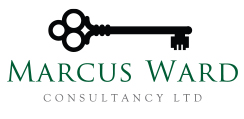A guide for Customs, Excise and VAT for exporters
This is a brief overview of certain issues that an exporter needs to consider if, as seems increasingly likely, there is a No Deal Brexit. There are a number of helpful links to assist. This could be an enormous change. HMRC estimate the number of customs declarations will rise from 55m to 255m annually and the EU requires eight copies of each customs declaration.
UK businesses need to plan for Customs and VAT processes, which will be checked at the EU border. They should check with the EU or Member State the rules and processes which need to apply to their goods.
Distance selling arrangements will no longer apply to UK businesses and UK businesses will be able to zero rate sales of goods to EU consumers. Current EU rules would mean that EU Member States will treat goods entering the EU from the UK in the same way as goods entering from other non-EU countries, with associated import VAT and customs duties due when the goods arrive into the EU.
Checklist
- Get an EORI number
- Check if you can use transitional simplified procedures
- Apply the correct customs procedure code
- Identify the UK tariff codes for all your products by searching trade tariffs on gov.uk. A tariff code allows you to:
- complete declarations and other documentation
- check if there is duty or VAT to pay and any potential duty reliefs
- If you use a UK roll on roll off location you will need to declare your goods before they board the ferry or train
- Pay Customs Duty on goods
- Research the destinations you want to export to. This background information, along with the commodity code of the goods will enable you to establish if goods will incur import duty in the destination country
- Check if you need a licence to import or export your goods
- Obtain software or an agent to make declarations
- Identify what documentary requirements apply for your products when exported to EU countries by searching the EU Commission Market Access Database. (When choosing a market, you cannot currently select the UK so, assuming the UK would have no tariff preferences under a no-deal scenario, select a country such as the US or China, where no preferential arrangements exist, to establish a comparable level of duty your product would face)
- Check for updates. Check the EU Brexit Preparedness portal, to understand the potential outcomes for your sector
- Check the origin of all products when exported to, or imported from EU countries. Identify the UK/EU/non-EU content (including all components and raw materials) and whether your goods may qualify as being of UK or EU origin. Access further information on rules of origin
- Customs delay – If working in time sensitive sectors, consider how your EU customers may be affected by customs delays. These may include; just-in-time practices, timed deliveries and potential penalties and short shelf-life goods
- Identify EU customers and suppliers who are cost-sensitive and who might be reluctant to pay more for goods with the addition of import duties, customs clearance costs, higher freight costs, or currency fluctuations.
- Identify exports to countries which have Free Trade Agreements (FTA) with the EU. Are they dependent on duty preferences or other FTA provisions? Consider the implications, particularly where main competition is with other EU businesses
- Access details of which countries have FTA with the EU
- Identify purchases from other countries which have FTA or Generalised System of Preferences (GSP) agreements with the EU.
- Identify sales to EU customers who incorporate those goods into their products, for re-export to countries with FTAs. Check whether supplier declarations are provided
- Cash flow – Consider protecting against foreign exchange fluctuations within your business
- Map and audit supply chains. Even if a company is ready for Brexit, it will be disrupted if a supplier is not prepared and cannot meet its contracts
- Check international contracts and renegotiate if required. Some intra-EU contracts will not include incoterms, the legal provisions for importing and exporting that define who is responsible for shipping goods across borders
- Develop a contingency plan – There is no guarantee that border procedures will operate smoothly immediately after Brexit, and businesses may need a contingency plan in case systems fail
- Stay up to date by registering for HMRC’s EU Exit update service www.gov.uk/hmrc/business-support, select ‘business help and education emails’, add your email address, select ‘Submit’, select ‘Add subscription’, choose ‘EU Exit’ then ‘Submit’
- Customs checks – Establish what level of risk of physical or documentary examination might apply for your goods imported from, or exported to EU countries
- For goods being exported to the EU which are not “wholly obtained” in the UK, and which have undergone processing in another third country as part of their production, it is important to understand the supply chain of components going into the product. Goods with components coming from non-UK countries will mean that that product is not able to benefit from any continued zero-tariff trade with the EU unless arrangements are put in place between the EU and UK
I hope that this is helpful. Please contact us if you have any queries.
